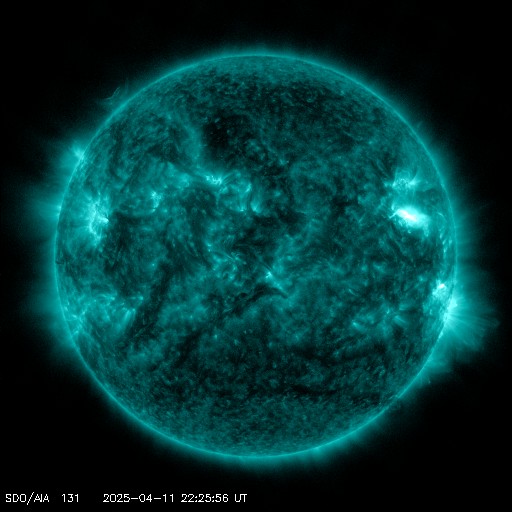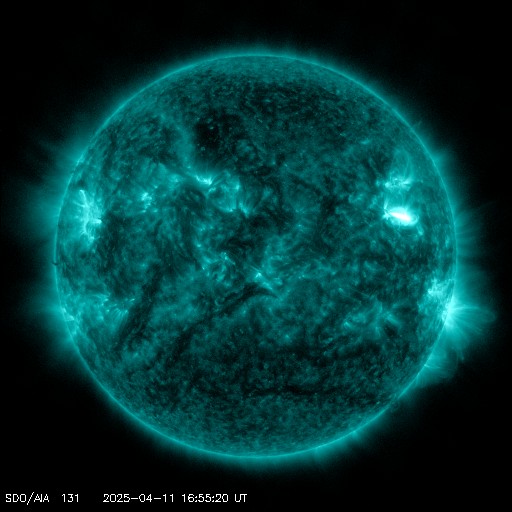Viewing archive of Sunday, 2 October 2011
Solar activity report
Prepared by the NOAA © SWPC and processed by SpaceWeatherLive.com
Joint USAF/NOAA Report of Solar and Geophysical Activity
SDF Number 275 Issued at 2200Z on 02 Oct 2011IA. Analysis of Solar Active Regions and Activity from 01-2100Z to 02-2100Z
IB. Solar Activity Forecast
IIA. Geophysical Activity Summary 01-2100Z to 02-2100Z
IIB. Geophysical Activity Forecast
III. Event Probabilities 03 Oct to 05 Oct
| Class M | 75% | 75% | 75% |
| Class X | 20% | 20% | 15% |
| Proton | 15% | 15% | 10% |
| PCAF | green | ||
IV. Penticton 10.7 cm Flux
Observed 02 Oct 131 Predicted 03 Oct-05 Oct 130/130/130 90 Day Mean 02 Oct 112
V. Geomagnetic A Indices
Observed Afr/Ap 01 Oct 012/009 Estimated Afr/Ap 02 Oct 010/010 Predicted Afr/Ap 03 Oct-05 Oct 005/005-005/005-015/015
VI. Geomagnetic Activity Probabilities 03 Oct to 05 Oct
| A. Middle Latitudes | |||
|---|---|---|---|
| Active | 15% | 05% | 40% |
| Minor storm | 05% | 01% | 20% |
| Major-severe storm | 01% | 01% | 05% |
| B. High Latitudes | |||
|---|---|---|---|
| Active | 15% | 05% | 45% |
| Minor storm | 05% | 01% | 20% |
| Major-severe storm | 01% | 01% | 05% |
All times in UTC
Current data suggests there is a moderate possibility for aurora to appear at the following high latitude regions in the near future
ReykjavikCurrent data suggests there is a slight possibility for aurora to appear at the following high latitude regions in the near future
TórshavnOulu, Rovaniemi, Kuopio, Sodankylä
Trondheim
Arkhangelsk
Kiruna, Luleå, Sundsvall, Umeå
Latest news
Latest forum messages
Support SpaceWeatherLive.com!
A lot of people come to SpaceWeatherLive to follow the Sun's activity or if there is aurora to be seen, but with more traffic comes higher server costs. Consider a donation if you enjoy SpaceWeatherLive so we can keep the website online!

Latest alerts
22:39 UTC - Solar flare
Moderate M1.05 flare
22:24 UTC - Hemispheric Power Index
The OVATION model predicts the Hemispheric Power Index to reach 50GW at 23:16 UTC
22:24 UTC - Radio Blackout
Minor R1 radio blackout in progress (≥M1 - current: M1.05)
17:09 UTC - Solar flare
Moderate M1.08 flare
16:51 UTC - Radio Blackout
Minor R1 radio blackout in progress (≥M1 - current: M1.04)
Space weather facts
| Last X-flare | 2025/03/28 | X1.1 |
| Last M-flare | 2025/04/11 | M1.0 |
| Last geomagnetic storm | 2025/04/06 | Kp5 (G1) |
| Spotless days | |
|---|---|
| Last spotless day | 2022/06/08 |
| Monthly mean Sunspot Number | |
|---|---|
| March 2025 | 134.2 -20.4 |
| April 2025 | 141.4 +7.2 |
| Last 30 days | 137.1 -3 |




